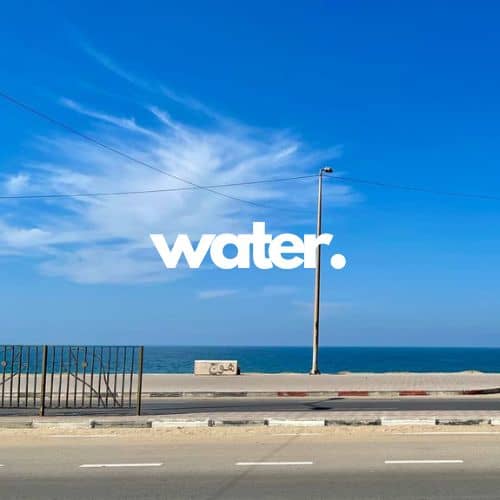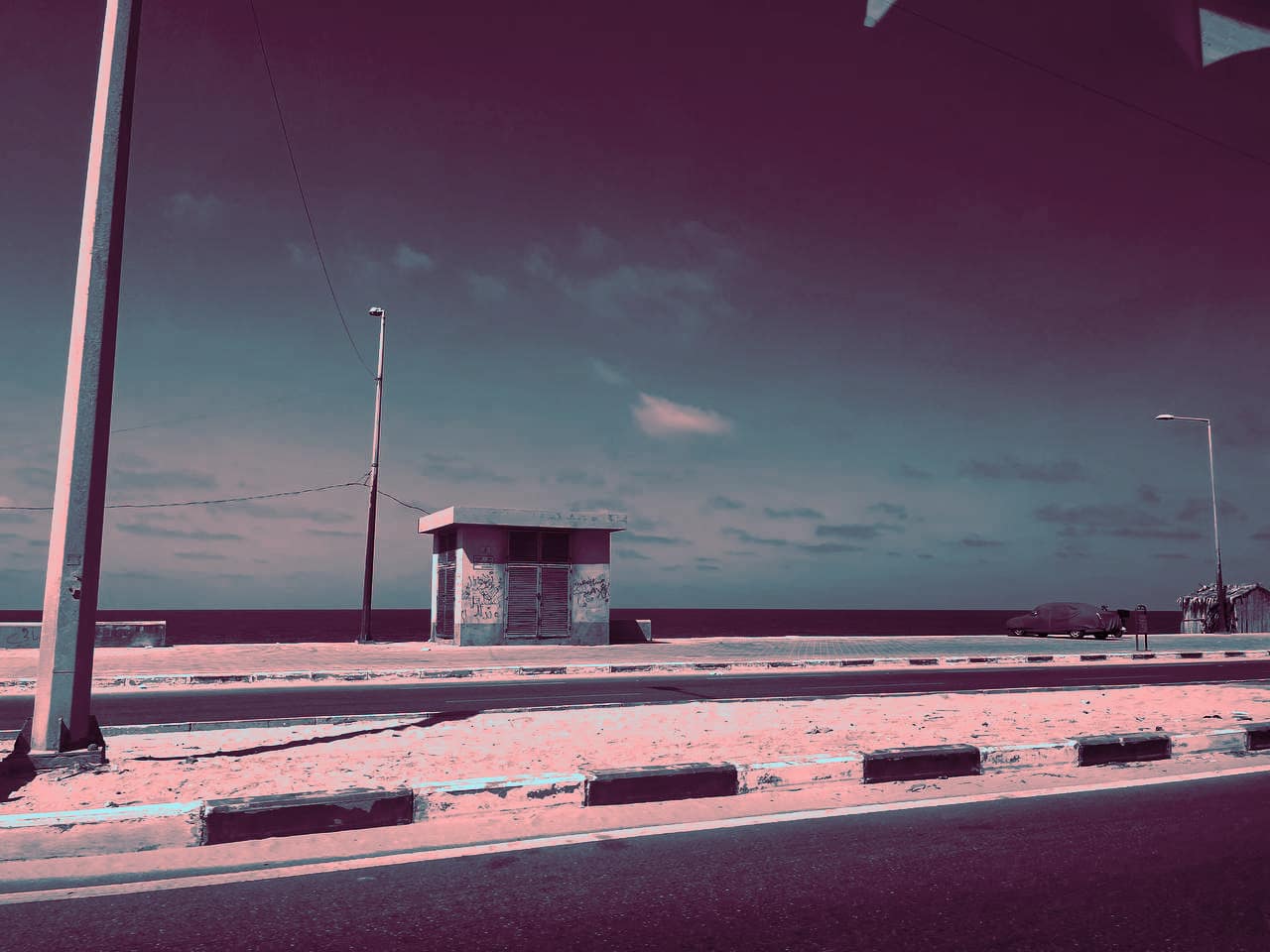Drinking and running water and sewage are subjects most people do not consider while in Gaza, even young children are acutely aware of their importance.
Despite the entirety of the Gaza Strip being bound by Mediterranean Sea on its west border, water remains a major issue for its residents. Gaza has long grappled with a water crisis and only a tiny percentage of Gazans having access to safe and clean drinking water. Running water is another concern for Gazans, as is sewage. Poor sewage systems in the Strip have resulted in environmental and public health concerns for the people of Gaza.

Drinking
Gaza has long grappled with a severe water crisis, exacerbated by reliance on Israel for water and poor water quality. In 2022, only 10% of the population of Gaza had direct access to safe and clean drinking water.1 A staggering 97% of drinking water failed to meet World Health Organization standards, necessitating the use of over 150 desalination plants, predominantly operated privately. By 2019, 90% of Gaza’s households depended on these plants for potable water.2
Various factors compound the water access challenge in Gaza. Fuel shortages threaten the operation of desalination plants, while limited electricity impedes the functioning of water, sanitation, and hygiene (WASH) facilities. Moreover, contamination from sewage, chemicals, and seawater further compromise the aquifer’s integrity.3
To cope, some families resort to drilling private wells or purchasing mineral water or filtered treated water from water trucks. These trucks, privately owned and recognizable by their distinct tunes reminiscent of ice cream trucks, play a critical role in delivering drinkable water to homes and businesses. Despite such efforts, the scarcity of potable water places Gazans at risk of dehydration and waterborne diseases.4 More than a quarter of all reported disease in Gaza is caused by poor water quality and access. In 2019, before the wars on Gaza in 2021 and 2023–2024, it was said that “if present trends in the water crisis continued,” Gaza was at risk of a disease outbreak or other public health crises.5
Running
Beyond drinking water, the availability of running water is also a constant concern for Gazans. The use of solar water heaters is hampered by insufficient sunlight, necessitating the use of electrical or propane heaters within strict time constraints to prevent accidents like tank explosions. This daily struggle underscores the pervasive challenges faced by Gazans in their quest for access to basic necessities.6
Since even the wealthiest are mostly unable to afford battery-powered water heaters, planning is paramount for all. Timing the heater’s operation before electricity cuts off ensures morning hot water. However, if the nighttime cold halts electricity, it will be a harrowing morning—a student, for example, would be freezing, wet, and rushing to school in damp clothes.
The consequences of a single oversight are severe. Without electricity, tasks like ironing or drying hair become impossible, leading to sickness. Even with perfect planning, the electricity’s unpredictability looms large, especially in winter when demand strains the already limited supply.
Sewage
In Gaza, the sewage system grapples with significant challenges, leading to widespread environmental and public health concerns. An estimated 110 million liters of untreated sewage are discharged daily into the Mediterranean Sea due to the lack of proper treatment facilities. This leads to contamination of the seawater within Gaza’s limited coastal area. Efforts to address this issue tend to reach impasses as obstacles, such as funding shortages, infrastructure damage from conflict, and resource constraints, are numerous. This all combines to result in the underperformance of existing wastewater treatment plants.7
Broken and damaged infrastructure often led to water flooding residential areas, which only serves to exacerbate pre-existing unsanitary conditions and increase the risk of waterborne diseases among the Gazan population. Gaza’s poor sewage system would compound these issues, with untreated sewage contaminating water sources and posing even more significant health hazards to the population.
References
- Responding to Gaza’s existential water crisis. (n.d.). https://www.anera.org/wp-content/uploads/2022/07/Anera-Report-Water-Gaza-Palestine-spreads.pdf ↩︎
- Baba, A., & Neuman, S. (2023, December 29). There’s a water crisis in Gaza that the end of fighting might not solve. NPR. https://www.npr.org/2023/12/29/1221571110/gaza-water-israel-crisis-hamas ↩︎
- Hall, N., Kirschenbaum, A., & Michel, D. (n.d.). The siege of Gaza’s water. CSIS. https://www.csis.org/analysis/siege-gazas-water ↩︎
- Gaza’s water crisis puts thousands at risk of preventable death – occupied Palestinian territory. ReliefWeb. (2023, November 8). https://reliefweb.int/report/occupied-palestinian-territory/gazas-water-crisis-puts-thousands-risk-preventable-death ↩︎
- Efron, S., Fischbach, J. R., Blum, I., Karimov, R. I., & Moore, M. (2019, May 16). The public health impacts of Gaza’s water crisis: Analysis and Policy Options. Rand health quarterly. https://www.ncbi.nlm.nih.gov/pmc/articles/PMC6557038/#:~:text=More%20than%20a%20quarter%20of,or%20other%20public%20health%20crises ↩︎
- Increasing-water-security-in-gaza-through-seawater- … (n.d.-a). https://www.unicef.org/media/91396/file/Increasing-Water-Security-in-Gaza-through-Seawater-Desalination.pdf ↩︎
- Abusalim, A. D., & About The Author: Dorgham Abusalim is the Online Content Editor at the Institute for Palestine Studies. He recently earned his Master’s degree in International Affairs from the Graduate Institute of International and Development Studies in Geneva. (2017, August 16). First death caused by sea pollution in Gaza. Institute for Palestine Studies. https://www.palestine-studies.org/en/node/232141 ↩︎
